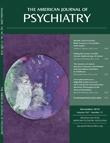In This Issue
The Genetics of Autism
Traits and genetic factors associated with autism spectrum disorders are common in the general population and siblings of patients and are not limited to individuals with the actual diagnosis. Nor is the genetic influence limited to the autism spectrum. St. Pourcain et al. (CME, p. Original article: 1364) found that a genetic variant previously linked to the diagnosis influences the trait of social communication in the general population. Among 7,313 children ages 3-12 years, the variant was also associated with a profile including subthreshold impairments in social, communicative, and cognitive abilities. In 1,235 families with an autistic child, Constantino et al. (p. Original article: 1349) discovered that 20% of siblings classified as unaffected had language delays plus autistic speech. Such siblings were more common in families having multiple children diagnosed with autism spectrum disorders. The twin study by Lichtenstein et al. (p. Original article: 1357) showed that concordance rates for autism spectrum disorders, ADHD, developmental coordination disorder, and tic disorder were greater in monozygotic than dizygotic pairs. Cross-disorder effects were also greater in monozygotic pairs, and a substantial proportion of the genetic variance for autism spectrum disorders was shared with the other disorders (figure). The editorial by Kendler (p. Original article: 1291) points out that these findings have emerged because studies of the heritability of autism have encompassed larger numbers of families.

Autism spectrum disorder shares much of its genetic influence with other disorders (Lichtenstein et al., p. 1357)
Changing Views of Mental Illness?
Public awareness of the neurobiology of mental illness increased between 1996 and 2006, yet the stigma associated with several major mental disorders did not decline. Pescosolido et al. (p. Original article: 1321) found that persons who have a neurobiological conception of schizophrenia or depression actually had increased likelihood of aversion or fear in their rating of vignettes of individuals with these illnesses. The perception of alcohol dependence as refl ecting “bad character” rose from 49% to 65% of survey respondents. Support for treatment increased, however, and in an editorial, Goldman (p. Original article: 1289) suggests that the outcome of the study would have been different if the vignettes had included individuals who have recovered from mental illness.
Maternal attachment to the newborn infant is often decreased in women who have postpartum depression. Moses-Kolko et al. (p. Original article: 1373) used functional magnetic resonance imaging to determine how these mothers perceive angry and sad faces. The left dorsolateral prefrontal cortex, which supports approach behaviors, was underactivated, and its normal connectivity to the left amygdala was not functional. Decreased activation of the left amygdala correlated with severity of depression, and decreased right amygdala activity correlated with the possibility of hostility to the infant. Brain activity in nonemotional tasks was intact. These findings might be of use to clinicians caring for these women to help patients and their families understand that lack of positive emotional reaction to the newborn's needs has a neurobiological basis. Leibenluft and Yonkers in an editorial (p. Original article: 1294) point out that these problems do not necessarily abate when the depression is treated with medication and suggest that clinicians pay specific attention to the mother's ability to respond emotionally to her baby.
Geriatric patients with comorbid major depression and executive dysfunction have psychomotor retardation, apathy, lack of insight into their illness, and behavioral disability disproportionate to the level of their depression, according to Areán et al. (CME, p. Original article: 1391). Patients received 12 sessions of psychotherapy that taught steps in problem solving: identifying a difficult problem, setting goals, discussing and then evaluating different strategies to reach goals, creating action plans, and evaluating their effectiveness. This treatment produced a 47% remission rate, compared to 29% with supportive therapy alone. Time to remission correlated with attainment in problem-solving proficiency, generally after 9 to 12 weeks of therapy. Wetherell's editorial (p. Original article: 1297) points out the increased effectiveness of psychotherapy that is targeted to the patient's identified problem.



